Five (more) wildflowers to spot at Falls of Clyde this week
May is a terrific time to spot wildflowers at the Falls of Clyde. Here are five more lesser-known species to get familiar with.
* * *
As I mentioned last week, the season is really picking up out on the reserve. Suddenly the trails have become wide tunnels winding through lush green foliage. Above, the luminous glow of young oak leaves; below, a cool carpet of wood anemone. A dozen shades in between.
Tucked among the fresh new growth are studs of vivid pink, yellow, white and purple, some familiar – most people can spot a bluebell – and some less well-known. Here are five more species that you can see on the reserve right now.
Pink purslane
Also known by the evocative name ‘Siberian miner’s lettuce’, you will find purslane growing in clumps in damp woodland – particularly near to trees and stumps dotted along the Falls of Clyde boardwalk. A plant favoured by foragers; its tender leaves are said to have an earthy flavour reminiscent of beetroot. Look out for its pale pink or white flowers, but don’t confuse them with the next plant on this list!
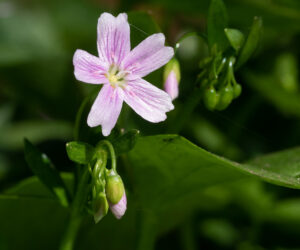
Greater stitchwort
Another plant with some interesting other names: ‘wedding cakes’, ‘star-of-Bethlehem‘, ‘adder’s meat’. Stitchwort flowers look quite similar to purslane, in that they have five split petals. The leaves are very different though – they look like blades of grass. If you keep an ear out in late spring, you might hear a ‘pop’ as their ripe seed pods explode!
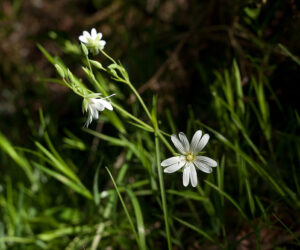
Water avens
I always think this flower carries a slight air of mystery, with its drooping, red-purple heads drawn like a hood over delicate pale orange flowers. You will often see them emerging in groups close to streams where their flowers are very attractive to bees, dragonflies and butterflies. Also known as ‘cure-all’, its roots reportedly have anti-inflammatory and antiseptic qualities and were used to treat stomach problems in the past.
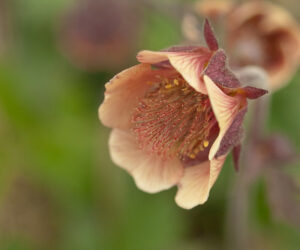
Cleavers
Appreciated by children for its potential to be stuck on other people’s clothes, cleavers (also known as ‘goose grass’ or ‘stickyweed’) gets its adhesive quality from being covered in tiny hooks, which help it climb up above other vegetation. It isn’t just useful for mucking about with though: its curdling qualities have lent themselves to cheese production in the past, while its mature seed pods can be roasted and prepared as a coffee substitute.
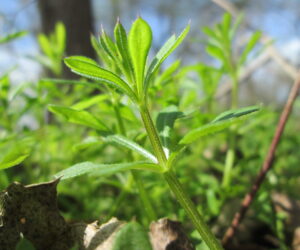
Bugle
Like tiny towers rising up from ground level, you will find bugles clustered in woodland clearings, their flower spikes covered in small purple petals. If you look closely, you might see a white-tailed bumblebee or the gingery-looking common carder bee feeding on it.
So, there you have it. Five more flowers to keep an eye out for (or ear, in the case of stitchwort!) at the reserve this week. We’ll be updating our wildflower trail throughout the summer as different species come into season. Head to the boardwalk and see how many you can spot.
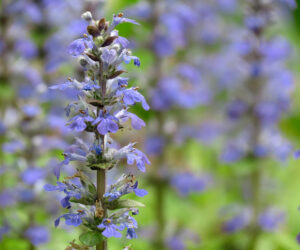
Patrick Endall, Falls of Clyde Seasonal Ranger
Help protect Scotland’s wildlife
Our work to save Scotland’s wildlife is made possible thanks to the generosity of our members and supporters.
Join today from just £3 a month to help protect the species you love.
Preface
May is a terrific time to spot wildflowers at the Falls of Clyde. Here are five more lesser-known species to get familiar with. * * * As I mentioned last …
